Volume 53, Issue 4
Displaying 1-10 of 10 articles from this issue
- |<
- <
- 1
- >
- >|
Photo Quiz
-
2012Volume 53Issue 4 Pages 219-220
Published: 2012
Released on J-STAGE: December 15, 1996
Download PDF (334K) -
2012Volume 53Issue 4 Pages 221-222
Published: 2012
Released on J-STAGE: December 15, 2012
Download PDF (462K) -
2012Volume 53Issue 4 Pages 223-224
Published: 2012
Released on J-STAGE: December 15, 2012
Download PDF (866K)
Dermatomycosis
-
2012Volume 53Issue 4 Pages 225-231
Published: 2012
Released on J-STAGE: December 15, 2012
Download PDF (862K)
Basic mycology
-
2012Volume 53Issue 4 Pages 233-239
Published: 2012
Released on J-STAGE: December 15, 2012
Download PDF (953K)
Reviews
-
2012Volume 53Issue 4 Pages 241-245
Published: 2012
Released on J-STAGE: December 15, 2012
Download PDF (160K) -
2012Volume 53Issue 4 Pages 247-254
Published: 2012
Released on J-STAGE: December 15, 2012
Download PDF (1004K)
Original Articles
-
2012Volume 53Issue 4 Pages 255-261
Published: 2012
Released on J-STAGE: December 15, 2012
Download PDF (635K) -
2012Volume 53Issue 4 Pages 263-266
Published: 2012
Released on J-STAGE: December 15, 2012
Download PDF (1583K) -
2012Volume 53Issue 4 Pages 267-271
Published: 2012
Released on J-STAGE: December 15, 2012
Download PDF (77K)
- |<
- <
- 1
- >
- >|
